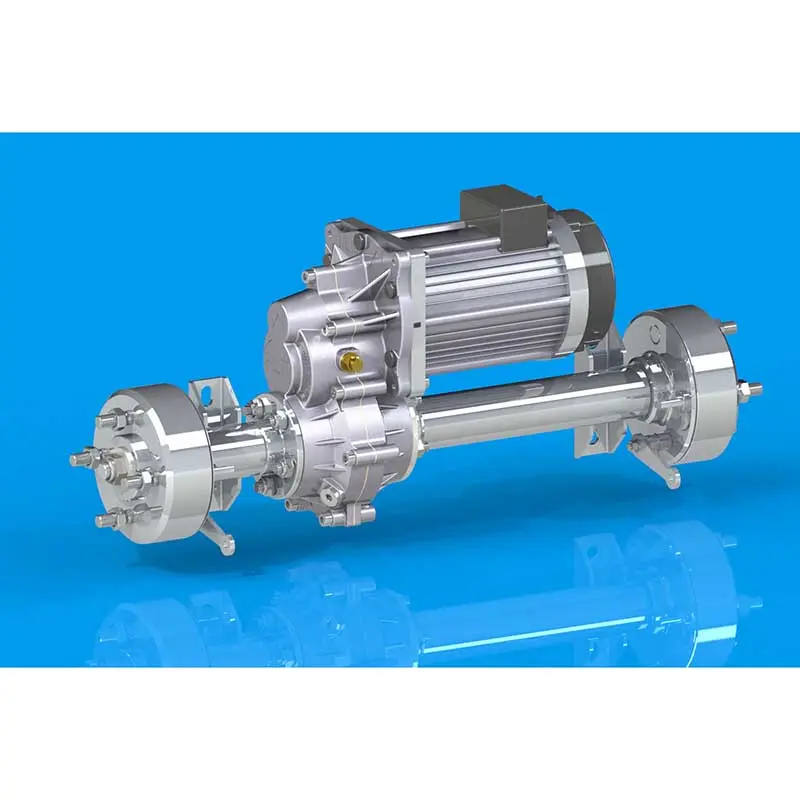The transaxle is a critical component of a vehicle’s drivetrain, responsible for transmitting power from the engine to the wheels. It combines the functions of a variable-speed transmission and a differential that distributes power to the wheels. Knowing the type of transaxle in your vehicle is critical for maintenance, repairs and upgrades. In this article, we’ll explore the different types of transaxles and provide guidance on how to identify the type of transaxle in your vehicle.
Transaxle type
1. Front-wheel drive transaxle: This type of transaxle is commonly found in front-wheel drive vehicles. It integrates the transmission, differential and axle into a single unit located at the front of the vehicle. The front-wheel drive transaxle’s compact design allows for efficient use of space and weight distribution, making it popular among small and medium-sized cars.
2. Rear-wheel drive transaxle: Rear-wheel drive transaxle is usually used in rear-wheel drive vehicles and some all-wheel drive vehicles. Unlike front-wheel drive transaxles, they are located at the rear of the vehicle and connected to the rear axle. Rear-wheel drive transaxles are known for their durability and ability to handle high torque loads, making them suitable for performance-oriented vehicles and trucks.
3. All-wheel drive transaxle: The all-wheel drive transaxle is designed to distribute power to all four wheels of the vehicle. They can be found in a variety of vehicle models, including SUVs, crossovers and performance cars. All-wheel drive transaxles are available in different configurations, such as full-time all-wheel drive, part-time all-wheel drive and on-demand all-wheel drive, each offering unique advantages in terms of traction and handling.
Identifying the type of transaxle
1. Consult your vehicle’s manual: The easiest way to determine the type of transaxle your vehicle has is to consult your vehicle’s manual. The manual usually contains detailed information about the drivetrain, including the type of transaxle used. If you don’t have a manual, you can usually find it online through the manufacturer’s website or third-party automotive resources.
2. Visual Inspection: If you have access to the underside of the vehicle, you can visually inspect the transaxle to determine its type. A front-wheel drive transaxle is usually located at the front of the vehicle, while a rear-wheel drive transaxle is located at the rear of the vehicle. The all-wheel drive transaxle may be located at the front, rear, or center of the vehicle, depending on the specific driveline configuration.
3. Research vehicle specs: If you know the make, model, and year of your vehicle, you can research specific drivetrain specs online. Many automotive websites and forums provide detailed information on different vehicle configurations, including the type of transaxle used. You can usually find the information you need to identify the transaxle type by entering the vehicle’s details into a search engine.
4. Get professional help: If you’re still unsure about the type of transaxle you have in your vehicle, consider seeking help from a qualified automotive technician or dealer service department. They have the expertise and resources to accurately identify the transaxle type and can provide valuable insight into its maintenance and repair requirements.
Why it’s important to know the type of transaxle
It is important to know the type of transaxle in your vehicle for the following reasons:
1. Maintenance and Repair: Different types of transaxles have unique maintenance and repair requirements. Understanding the type of transaxle in your vehicle will help you select the appropriate lubricant, replacement parts and repair procedures to ensure optimal performance and longevity.
2. Performance Upgrades: If you are considering a performance upgrade, such as a transmission replacement or differential upgrade, knowing the type of transaxle will guide your decision-making process. It will help you determine compatibility with aftermarket components and ensure upgrades fit your vehicle’s drivetrain configuration.
3. Troubleshooting: When diagnosing driveline problems or unusual noises, knowing the type of transaxle can provide valuable insights into potential causes and solutions. It allows you to communicate effectively with an automotive professional and accurately describe the symptoms you are experiencing.
In conclusion, the transaxle plays a key role in the operation of the vehicle’s driveline, and understanding its types is critical for vehicle maintenance, repair, and upgrades. By becoming familiar with the different types of transaxles and using recommended methods to identify your vehicle’s type, you can make informed decisions and ensure optimal performance and reliability of your vehicle’s driveline. Whether you drive a front-wheel drive, rear-wheel drive, or all-wheel drive vehicle, knowing your transaxle type allows you to take proactive steps to maintain your vehicle’s driveline.
Post time: Mar-15-2024


